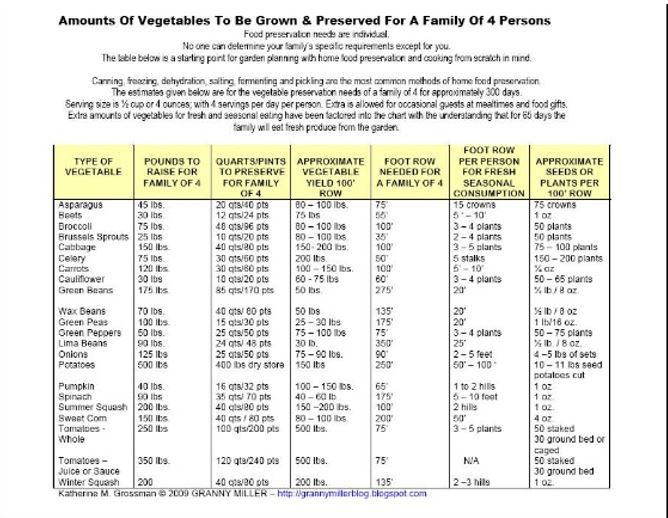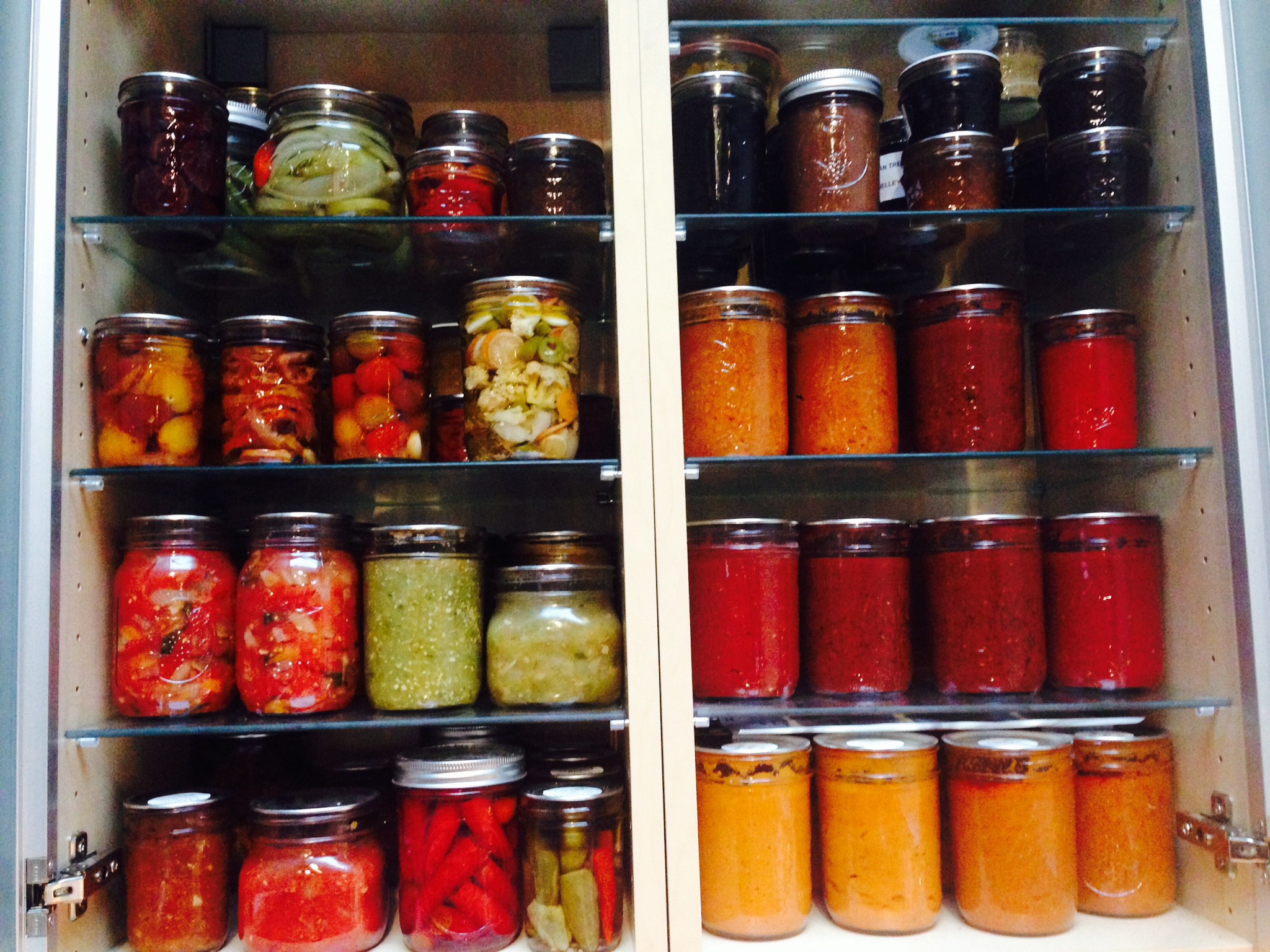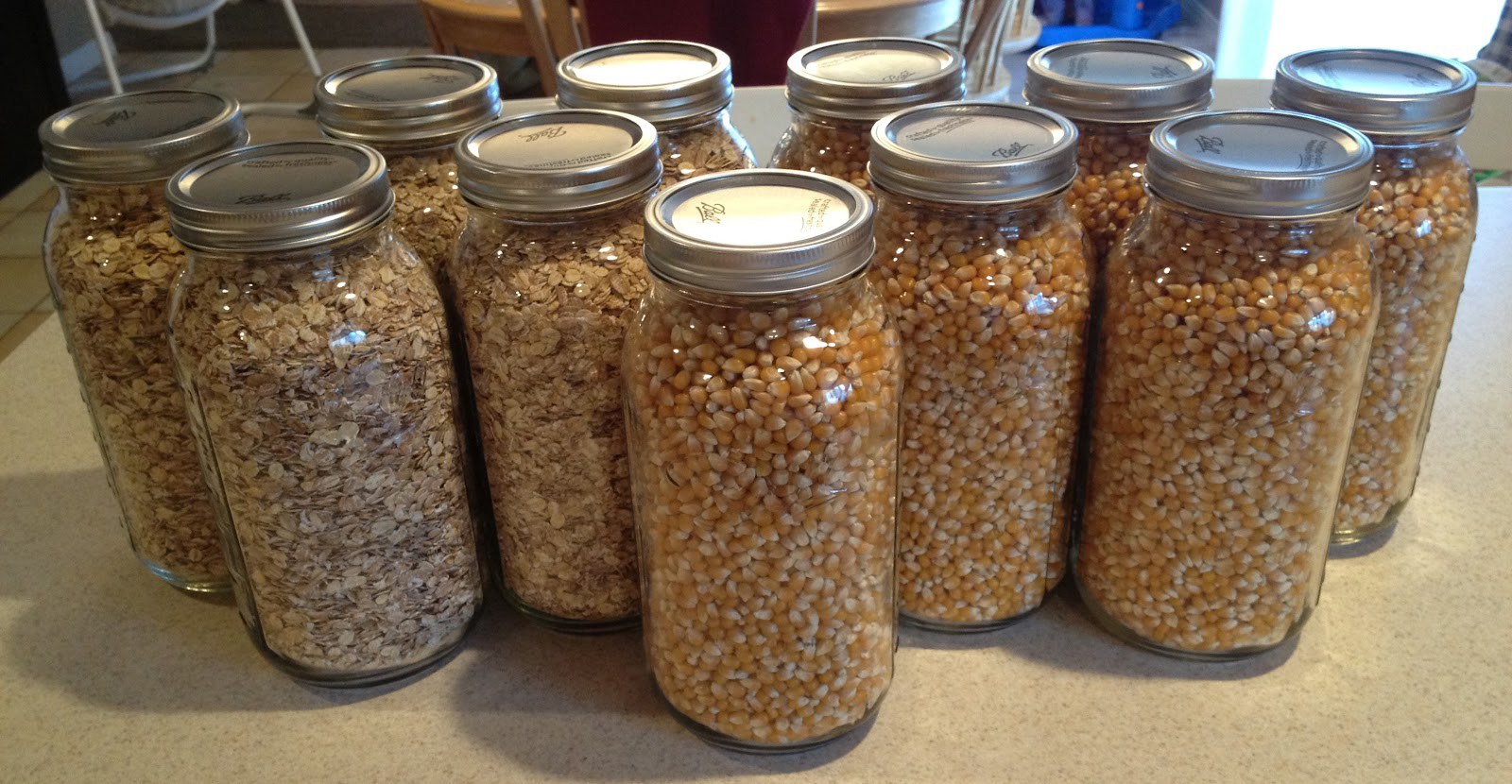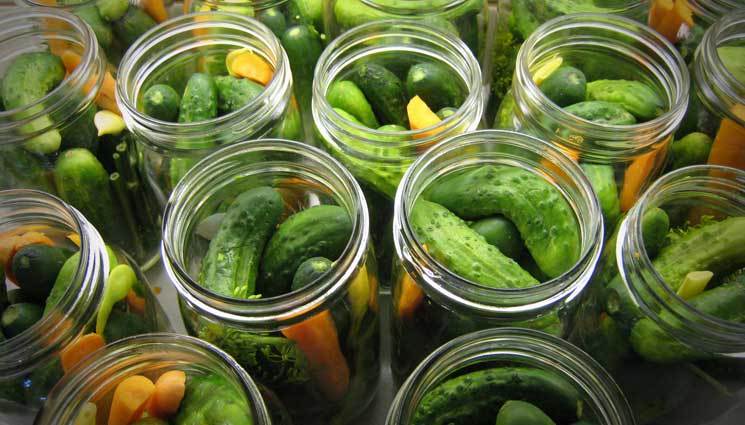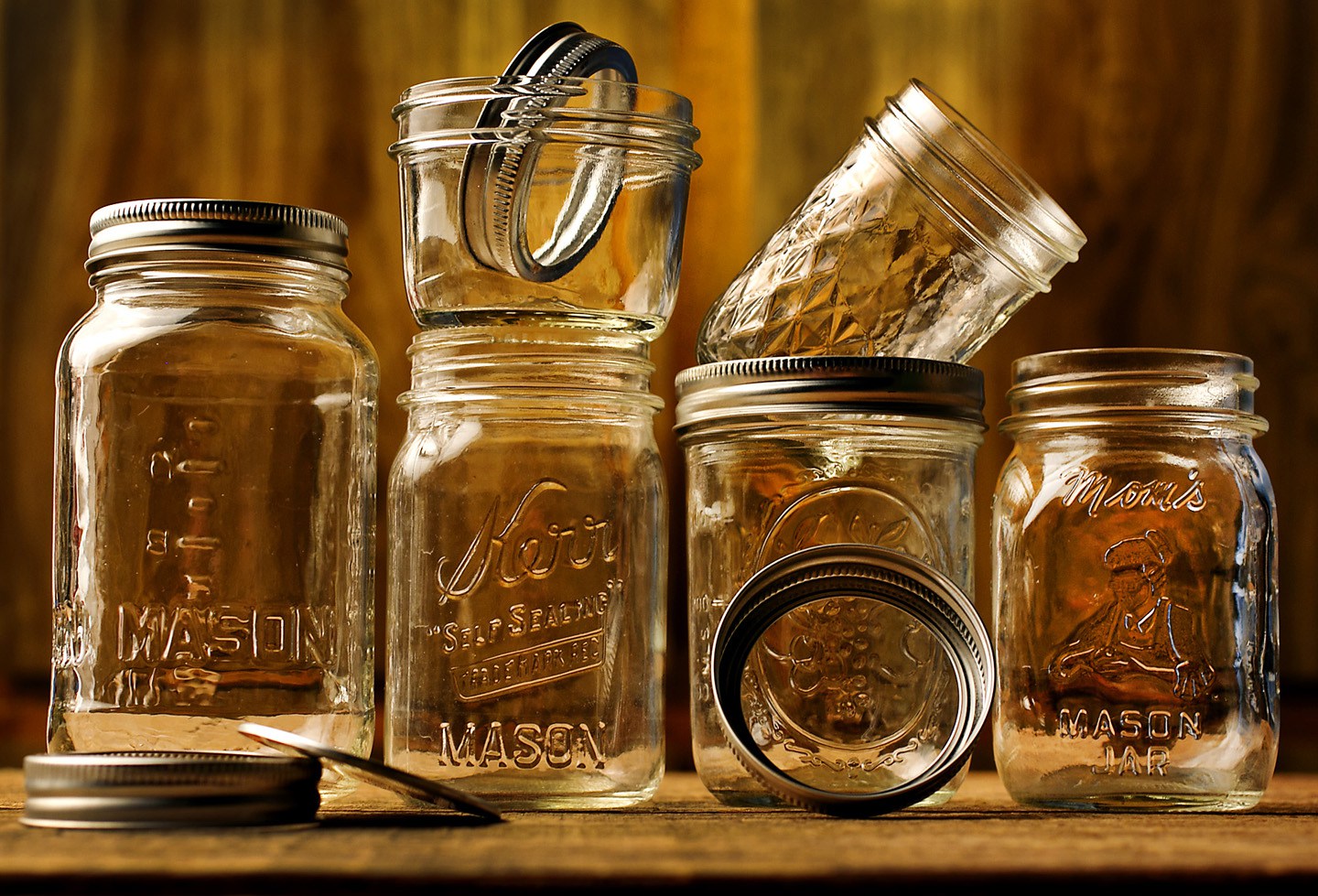
When we work our way toward a goal of self-sufficiency, a lot of times producing and preserving food comes up. There are lots of methods, and there are thankfully things like dry meats, grains and legumes, and fruits and veggies that can go straight into cellars and other cold storage. However, for most of us, canning eventually rears its head. How many canning jars we’ll need depends on whether we’re growing, foraging, fishing, hunting and raising livestock with an aim for total self-sufficiency in a societal breakdown or just some supplementary uses, and what we choose to grow or raise. Either way, we need a pretty big pile of jars (and lids). That’s a big commitment to storage space.
There are several types of canning jar lids that are reusable. That’s an area where everybody can make their own call based on what they prefer. Many of us are going to choose disposables. For every jar we get, we should make sure we have at least a couple of backup lids each.
So how many canning jars do we need? That depends on our plans. Small livestock could potentially be harvested and consumed, but if there’s no working freezer and we’re out of canning jars, taking advantage of migratory birds and preserving beefs and deer is going to be limited to smoking and drying or using up enormous amounts of our stored salts.
When the Granny Miller website was still up and running, the chart below was posted.
You are going to need a butt load of canning jars….
Get More Canning Jars … and Lids
It has flaws but it’s handy in many ways – starting point for row yields, estimating seed and start needs. In this case, it’s canning yields. For two cups of veggies a day for four people, her suggestions would require 800-1200 jars. That’s a lot of jars. That’s not a lot of calories, and most of the veggies won’t leave somebody feeling full for very long. It doesn’t account for cellar potatoes or squashes, grains, or dry legumes, of course. It also doesn’t include any jellies or a lot of never-canned fresh food like lettuces (diet food).
800 jars is a mighty pile alone: 67 flats. In quarts, that’s nearly 700# of storage on its own. It’s eight five-foot stacks taking up a bit over a one-foot square somewhere, or sixteen 2-3’ stacks we could run as a counter in a shed or bedroom if we’re inclined (my pick). We’re looking at devoting a fair amount of space to canning jars if we’re planning to delve in big time and live off our land during a crisis.
Others have also taken a stab at suggesting canning jars for self-sufficiency and preparedness, or jars-per-garden ratios, like the old Victory Garden guides and the “How Many Canning Jars” post (take this with a grain of salt: same totals for an individual as a couple, but the initial per-day breakdown is handy).
And again, to be able to can it all over again, we need spare lids.
Storage Space for your canning jars
Unless we’re already self-sufficient, it’s unlikely we’re using 800-1200 or more than 2K canning jars each season. That creates a lot of dead space. Jars can be stored outside in extreme temperatures, but it’s still dead space.
Happily, it doesn’t have to be wasted space. We can use our non-canning jars for some of our storage.
Water immediately spring to my mind, since few of us really have enough water storage for a comfortable buffer between a contaminated well or loss of utilities and a backup plan, but that would require actually canning them to seal it – which renders the first batch of lids “used” before a crisis even starts. There are other options, though.
Everyday Life
A lot of my dehydrated produce and herbs ends up in various quart and pint jars. I also keep in instant milk and sour cream powder. The canning jars make a far more bug-resistant storage vessel than Mylar bags or pasteboard boxes, in volumes that I can easily move through. Oxygen absorbers inside the jars keep them nice and fresh in the meantime.
Canning jars can be used with and without oxygen absorbers to store temporary and long-term dry foods like nuts, beans & grains, powdered mixes, and dehydrated produce.
We’re a hash brown family – any time, any day, grated potatoes make us happy. Cheesy grated potatoes make us even happier. Since I rarely make one box of instant mac-and-cheese, I tend to cheat a little. They think it’s ‘cause I love them. I’m really using evaporated milk and grating cheese so that I can stash 1-2 packets of cheese powder. That way I can use it for cheesy hash browns on a night or morning I don’t feel like cooking or am rushed.
Not only are there whole canning jar flats of my own and commercially purchased bulk hash browns in my “shop first” closet, there’s an additional flat where all my collected mac-and-cheese packets live. (Yes, we’re that lazy and that addicted to artificial colors and flavors, and we eat that much mac-and-cheese.) When I empty the jar in the pantry, I just pop in and grab more instant cheese flavoring. I do the same thing with those hideous Hamburger Helper cheese toppings.
I also use canning jars to take or send some of the tasty boxed noodles with cheese and cream sauces camping and hiking. A pint fits 2-3 packages much more compactly and with less breakage and more water resistance than their original boxes. That started as a storage supply trick, but it was just so darn handy that now some of our buddies do it just for camping.
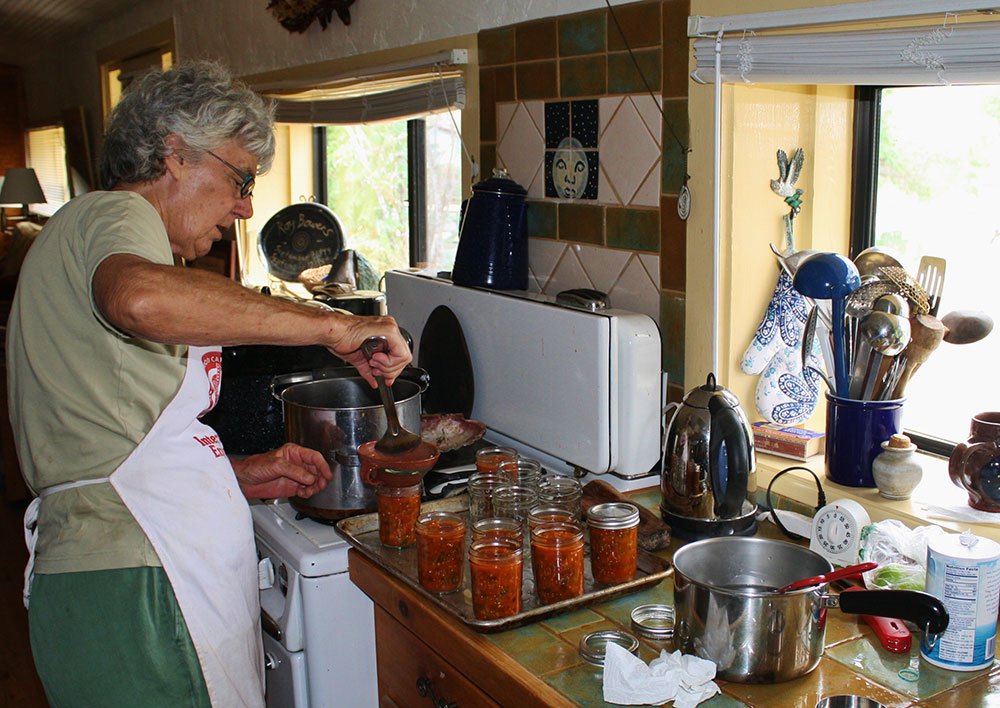
Salsa from all your tomatoes and peppers is a great canning idea. Make sure you stock up on chips too.
Canning Jars for Non-Food Storage in Daily Life
Canning jars are allowed for some of our shop-type and office-type detritus, but even though I will boil them all (I know – new rules), I still just mentally can’t deal with some things going in canning jars I will ever want for foods. Too, I don’t want them rolling around and screws and nails gouging the glass and providing a haven for grungies or chemicals.
Image: Canning jars can be used for non-food storage – just be aware of what’s going into them to avoid scratches and harmful chemicals.
Still, I do use them for banana clips, paperclips, sticky pads and flagging stickers, various tiny glue tubes, ear plugs, some sewing supplies, sugar and stirrers when I travel, some drawing-craft supplies, and some animal supplies like Cutter for fleas, the caches of Heartguard, and various dewormers.
I also keep some homemade cloth *bleach* wipes (dish detergent wipes and Windex wipes) in canning jars on my counter, and have trained my family that it’s totally normal to have a canning jar sitting in its lid and rim in the “dump the pockets” alcove and the laundry room. It’s just easier for me to haul the coins to the bank in a reasonable-sized jar with a fitting lid.
Image: I’m not the only one who keeps canning jars available for dumping coins from pockets.
There are all kinds of ways to use canning jars in our daily life. Some of them cross over into preparedness like my cheese sauce packets. Some of them are solely for daily life, like dehydrated peppers in my fridge and coins on my dryer.
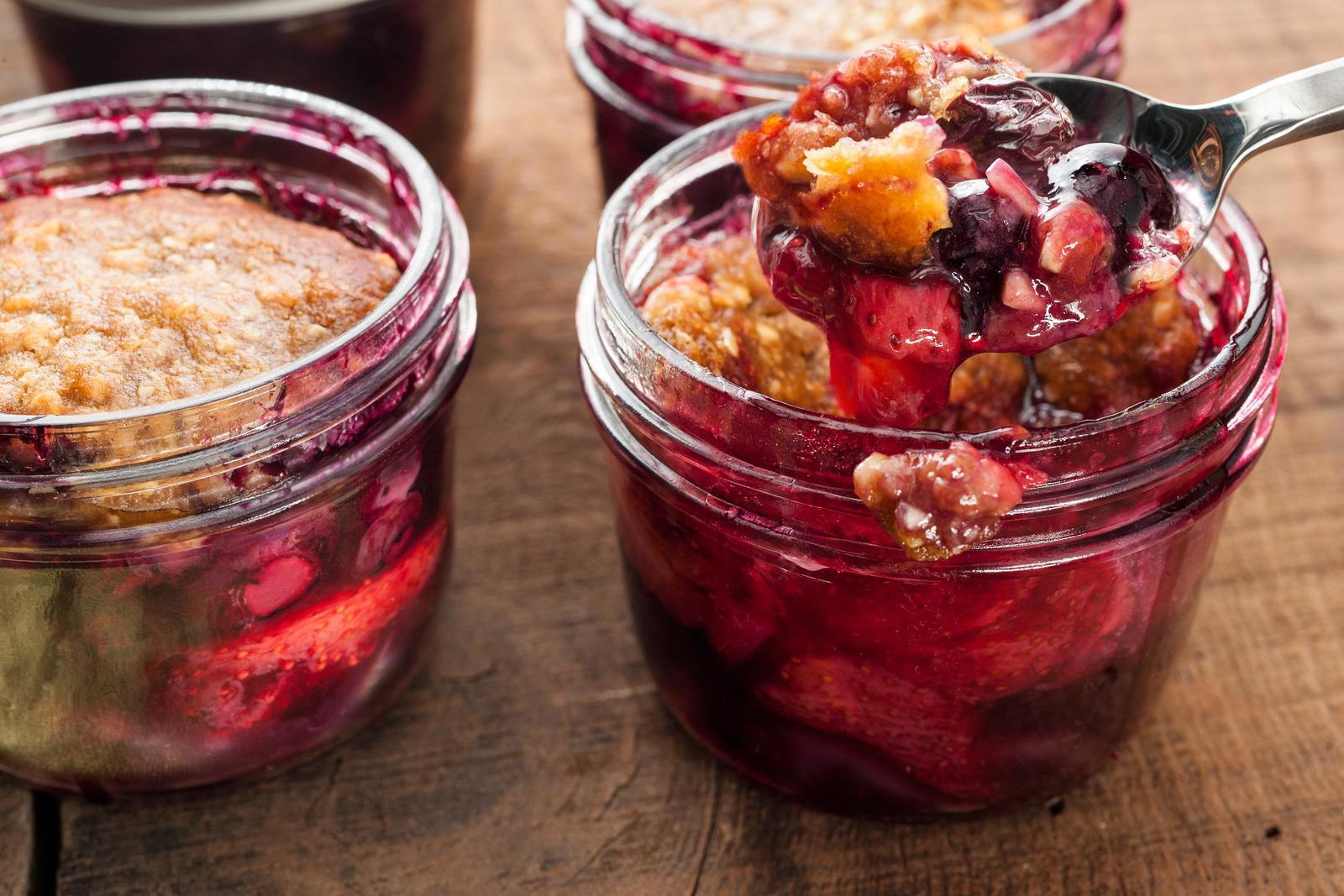
Whole meals can be canned, in this case dessert!
Salty & Crunchy Snacks can be stored in canning jars
Besides popcorn and banana chips, when we talk about feel-goods for storage, salty and crunchy foods don’t really get a lot of play. Maybe it’s because so many of those items get trashed in storage in bags, have relatively short shelf lives, and are expensive from MRE Depot and Thrive.
That’s the perfect kind of thing for canning jars.
Oxygen absorbers help extend the shelf life of our foods way past the original best-by or expiration date, and the solid walls of the jars keep delicate items safe from being crushed in the vacuum or by other bags. Portable? Not so much, maybe a few jars. But sanity saving in an outage, personal financial reversal, or serious crisis? Almost assuredly.
Think about the mood boost inside a household if you got a $5 packet of O2-absorbers, then took $13, $25 or $50+ dollars to Walmart and the dollar store, and picked up a weekly or monthly something special, something that isn’t another spoon meal like pudding or having peaches instead of berries in oatmeal.
There are also items that we only crave once in a while, but when we crave them, we’re insatiable until we get them. For some of us, those things are crunchies, be they salty or sweet.
Some of the things that can be stored for years in canning jars with oxygen absorbers are:
- Goldfish & Chez-Its in their many wondrous flavors
- Teddy Grahams
- Pretzels (small rods and twists)
- Tortilla chips (quarts or larger; don’t be silly here)
- Corn chips
- Graham cracker blocks
- Cold cereal
- Rice Krispies & Chex (yes, they rate their own listing)
- Cookies (Crisp, dry cookies; not soft ones)
*Think generics
Depending on the size of the cookies, it may take a couple of quarts and have some “wasted” air space inside per serving, or maybe it’s planned for just a couple of cookies with an evening lemonade or afternoon cup of tea. It depends on family size and cravings, but we don’t want a single cookie almost ever – it just points out that we don’t get cookies much. One exception would be the types of cookies we stick in the side of a bowl of pudding almost as a garnish, something just there as an extra special treat and a little crunchy finger food.
Portion Control
Another really nice aspect of storing our treats in canning jars is the portion control. It’s harder to decide not to eat a whole bag of chips, M&Ms, or cookies, or not make a whole box of Rice Krispy treats when it’s right there. It’s easier if we’ve reached into a specially marked tote or trunk or dark corner of the basement and only brought out a jar or two of whatever our vice is.
I can also shake the stuffing out of cake mixes and divide them between jars, scan the directions, stick those inside with the mix, with the note that it’s half or a third of the total – whichever divides best for the oil and eggs. I don’t usually need a whole cake mix, not really. In a crisis, a single-layer round pan or square pan or a bread loaf pan that’s been split for filling will be a mood boost as it is. When it’s just two or three of us, that’s already more than sufficient for multiple servings. I already split a baking mix when I do dessert for us a lot of the time, or I’ll freeze one layer or one bread loaf pan to turn into biscotti or triffle another time.
In an emergency, I don’t really want leftovers. Even more than now, I don’t want resentments about who got extras and who didn’t, and I don’t want bugs. Better if I can make the right number of cupcakes or a smaller pan of brownies. Canning jars let me do that.
Bonus: Even though they’re clunky and heavy, storing cake mixes in canning jars actually saves a lot of wasted air space in our cache. The jars are also a lot more water and pest resistant than boxes and cellophane.
Portion control with canning jars goes for just about anything, not just baking mixes. I do it with Chex cereal in daily life so I can open a reasonable amount of Chex Mix and not grab a handful from a big cookie jar every time I wander through the kitchen.
Large and small marshmallows for toasting, s’mores, rocky road, or cocoa are common ones in our storage. It’s one of the ways I mentally allot out feel-goods like chocolate chips to add to pancakes or bannock on a monthly basis in a disaster.
That budgeting applies to all phases of prepping storage. One jar of Milky Bones and one of chewies a week, then doggies get no more, or we stand a chance of running through all of them in three months. One jar of Kleenex, then use hankies. One jar of special-treat drink mix packets and extra tea a month, and then it’s just the daily plan for juices and caffeine. One jar of tampons, and then wear the moon cups or cloth pads. One jar of instant seasoning packets, then do it from scratch.
Image: Portion control and “budgeting” using canning jars extends to feel-good consumables and things like custom photo puzzles and miniature, party favor sized toys, games, & crafts.
I even use jars to hold some of the feel-good consumables for holidays and birthdays, and special-treat gimmicks like mini activity books and Oriental Trading Co. craft kits. Some things I store are:
- sponge-pill animals
- miniature Farkle & Piggy games
- marbles, jacks
- keychain games & puzzles
- cutesy soaps, lotions, mini body wash
- custom photo puzzles
By portioning them into jars, I’m not as tempted to give them too often or grab too many at once the way I am with the ones in storage totes.
Canning Jars for Storage
Since we’ll need so many of them in a crisis or to truly go off grid, and since it’s one of the rare household goods items that really doesn’t exist in enough quantity in stores to make for a reasonable resupply once everyone has died off, canning jars and lids are something we should go ahead and lay on – in quantity.
Image: Most stores don’t carry enough canning jars and lids for even one family’s meat or vegetable needs for 3-9 months, so they’re something to stock up on ahead of a disaster – they’re not like hammers and underwear that should still be available well after a major life-ending collapse.
That requires a lot of space, but we can make use of some of the “dead” space with other parts of our storage. Doing so is sometimes even more space efficient than original packaging, even with the density of jars.
Small oxygen absorbers (20cc, 50cc, 100cc) work well to seal jars to the same level that the factory cleaning does when we get them new. By that, I mean that it forms a vacuum. The seal is air-tight and more than sufficient for keeping out moisture. However, it’s not creating so much pressure that it deforms the lids. That means it’s safe to use a lid I’ve vacuum sealed with an O2 absorber for pressure or water bath canning later.
They’re not the lightest things on earth, so we have to make sure we’re using pretty sturdy shelving. Stacking them works, but make sure they’re stacked level or upper boxes like to slide forward and take out the next couple in line with them when they go.
Here’s some other self-sufficiency and preparedness solutions recommended for you:
The Lost Ways (The vital self-sufficiency lessons our great grand-fathers left us)
Survival MD (Knowledge to survive any medical crisis situation)
Backyard Liberty (Liberal’s hidden agenda: more than just your guns…)
Alive After the Fall (Build yourself the only unlimited water source you’ll ever need)
The Lost ways II (4 Important Forgotten Skills used by our Ancestors that can help you in any crisis)
The Patriot Privacy Kit (Secure your privacy in just 10 simple steps)


